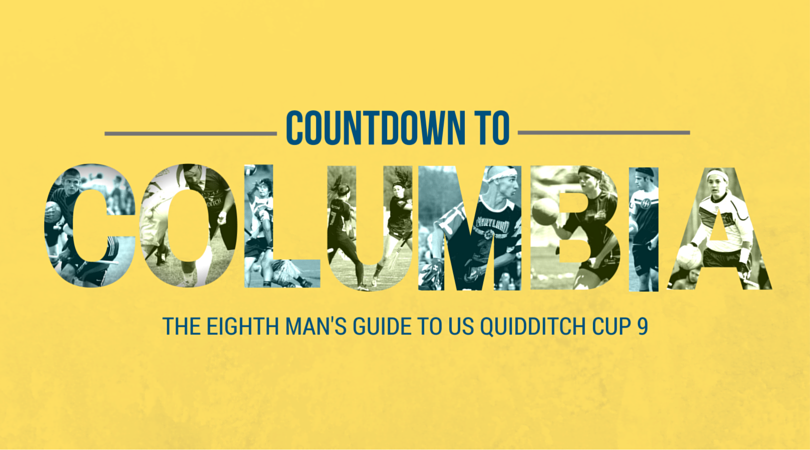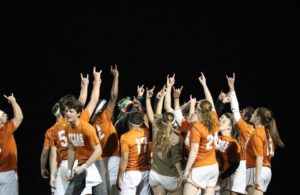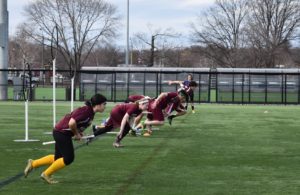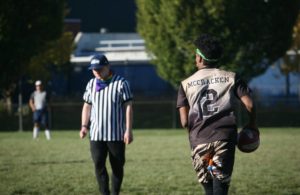- Rule, Britannia, no more?
- Unpopular Opinions: US Quadball Cup 2023
- Proven Contenders: University of Virginia
- Proven Contenders: Rutgers University
- Proven Contenders: University of Michigan
- Proven Contenders: Creighton University
- Different Perspectives: A Look Inside USA Ultimate
- Antwerp QC, Much of Belgian Core, Leaves Competitive Quidditch
- Updated: April 15, 2016

Due to time limitations, graphics will be absent from this article.
RAIN CITY RAPTORS
 For all you at home wondering who the Rain City Raptors are, this first year team is largely made up of the key players from last year’s Northwest Regional runners up (the Western Washington Wyverns) with a few important additions. Chief among those additions is starting chaser and seeker Brandon Booth. Besides adding both speed and size to the lineup, Booth brings much needed out of region perspective to the region, having played for Central Michigan in years past. With a chasing line far more developed than that of last year’s Wyverns and their undisputed dominance of the color neon green, the Rain City Raptors are unlike any team the Northwest has ever seen before.
For all you at home wondering who the Rain City Raptors are, this first year team is largely made up of the key players from last year’s Northwest Regional runners up (the Western Washington Wyverns) with a few important additions. Chief among those additions is starting chaser and seeker Brandon Booth. Besides adding both speed and size to the lineup, Booth brings much needed out of region perspective to the region, having played for Central Michigan in years past. With a chasing line far more developed than that of last year’s Wyverns and their undisputed dominance of the color neon green, the Rain City Raptors are unlike any team the Northwest has ever seen before.
With the three headed monster of a chasing line made up of Booth, Ross Schram Von Haupt, and Jake Ronhaar, the Raptors run an incredibly high powered, versatile offense. Each of the three are capable of making drives, taking shots, and make crisp passes, in addition to being able to make stops and tackles on the defensive side of the ball. Booth, Schram von Haupt, and Ronhaar have certainly combined for the majority of the team’s goals and are largely responsible for the success the Raptors have seen in their inaugural season.
But like every Northwest team that isn’t the Boise State Abraxans, it’s the Raptor’s beating game that leaves some to be desired. Although the improvement over last year’s Wyverns squad is significant, the Raptor’s beating game is underdeveloped and not up to standard with the top teams in the nation–specifically their snitch on pitch game. Although I expect the Raptors to be able to shoot, drive, and tackle their way into earning some wins at US Quidditch Cup 9 (especially since they have likely secured the top spot in their pool), any team with a developed beating game will quickly shut down any offensive power the Raptors currently have and create gaping holes in the defense. Expect their chasing line to keep them in games against strong opponents and for Booth to bail them out of close situations, but don’t expect them to come away with snitch grabs against experienced beating squads. Depending on the strengths of the teams they draw in pool play, the Raptors could find themselves with a favorable seeding in bracket play, or left out of day two altogether.
 When it came to the Northwest Regional Championship match, it was clear who out of the Raptors and the Abraxans had been playing snitch range games all season. With the snitch on pitch, star seeker Brandon Booth was completely unable to find his way past two Boise beaters defending the snitch, leaving Boise seeker Dan Donnelly all the time in the world to secure the win for the Abraxans.
When it came to the Northwest Regional Championship match, it was clear who out of the Raptors and the Abraxans had been playing snitch range games all season. With the snitch on pitch, star seeker Brandon Booth was completely unable to find his way past two Boise beaters defending the snitch, leaving Boise seeker Dan Donnelly all the time in the world to secure the win for the Abraxans.
What is impressive, however, is that even with a less than perfect beating line, the Raptors were still able to stay in snitch range against the Abraxans thanks to their multi-faceted chasing line. The fact that they were able to squeeze in 8 goals against a tight, conservative defensive front from the Abraxans is remarkable. The problem, though, is that unless they’re able to get out of snitch range, this high powered chaser offense can do nothing to seal the victory for the Raptors.
From a basic standpoint, the Raptors’ biggest strength lies in their chaser line, while their most easily exploitable weakness is snitch on pitch beating. If the Raptors can find a way to consistently get Booth to the snitch, they’ll be able to win some big games at Quidditch Cup 9. However, fixing something like snitch on pitch beating can only come through practicing snitch on pitch games–and unless the Raptors travel out of Washington before they make it out to South Carolina, it is unlikely we’ll see it improve much before April comes around.
STARTING LINE
Keeper: Jake Ronhaar
Chaser: Ross Schram Von Haupt, Jake Rhinehardt, Abby Schmidt
Beater: Jacob Keith, Molly Bocian
Seeker: Jake Rhinehardt
TELLING NUMBER
The Raptors have only ever played 2 matches against non-Northwest teams. Although they came away with two wins against Northern California teams this season, a lack of out-of-region experience is likely to hurt them at US Quidditch Cup 9.
CRIMSON ELITE
 After a failure to register a coach on time changed its first eight games to forfeits, Crimson Elite’s entire year fell apart.
After a failure to register a coach on time changed its first eight games to forfeits, Crimson Elite’s entire year fell apart.
The team entered the West Regional Championship as a Pot Three team in the tournament’s toughest pool, and will likely arrive toUS Quidditch Cup 9 with a similar seed and another uncertain spot in bracket play. This is extremely unfortunate, as its recent win against the Lost Boys Quidditch Club proved that Crimson is finally starting to figure out its identity and earn its name.
Crimson Elite can’t overwhelm any top-tier team with its quaffle corps, and it is fully aware of that fact. Its goal is not to take quality teams out of range; it is to make sure those quality teams don’t take them out of range. You can’t truly call Crimson’s style of offense “slow ball,” because keeper George Williams still hasn’t fully figured out how to properly stick to that strategy. Instead, the squad’s cautious offense gives beaters the time to make their move and then capitalizes once openings are created with either a Williams drive or a perfectly-timed pass to chaser Kristin Jakus by the hoops. While this strategy has helped Crimson stay close to top teams like the Lost Boys and the Los Angeles Gambits, the slower pace has allowed weaker teams to play them close as well. And while seeker Dan Howland has been consistently great all season, it is always an extreme risk to be in snitch range regardless of your seeker’s skill level.
 Crimson Elite prefers using dual-male beater lines, predominantly due to the struggle it faces scoring against a set defense, even one with just a single bludger. This dual-male set has kept the team competitive in the bludger game against the elite, but any time the Crimson beaters lose control, the team falls apart on both sides of the ball.
Crimson Elite prefers using dual-male beater lines, predominantly due to the struggle it faces scoring against a set defense, even one with just a single bludger. This dual-male set has kept the team competitive in the bludger game against the elite, but any time the Crimson beaters lose control, the team falls apart on both sides of the ball.
A primary reason for this is the lack of physicality and agility in its non-male chasers, and as such, it may be wise to add a non-male beater to the mix. Jakus is one of the team’s top scoring chasers overall, but her athleticism may be better used as a beater, especially because Crimson’s current dual-male set isn’t nearly as aggressive as it should be. If Jakus transitioned, Crimson could play another male in the quaffle game, which could drastically improve Crimson’s man coverage on defense, and make it easier to pullout of range against weaker opponents.
As is, Crimson’s preferred pace will keep the team from being blown out by all except the absolute best at the US Quidditch Cup, but if it wants to feel a bit more comfortable against weaker teams, Crimson has to figure out how to speed things up and put less pressure on Howland to bail the team out every single game.
STARTING LINE
Keeper: George Williams
Chaser: Kristin Jakus, Gina Allyn, Erik Tita
Beater: Dakota Briggs, Andrew Tita
Seeker: Dan Howland
LOS ANGELES GAMBITS
 The LA Gambits entered this season with little fanfare. The team collapsed at World Cup 8, where the Gambits lost to Lone Star Quidditch Club on Day 1 and suffered a not-so-sweet loss to University of Texas during the Sweet 16. While the team did leave South Carolina with a notable win against Baylor University, that small victory was forgotten amid the Gambits’ struggles with the Swiss format. Still, the team entered the season ranked eighth, falling from fifth place due to skepticism over its beating game, and the departure of key players Ren Bettendorf, Alex Richardson, Tanna Helm and Kyle Epsteen.
The LA Gambits entered this season with little fanfare. The team collapsed at World Cup 8, where the Gambits lost to Lone Star Quidditch Club on Day 1 and suffered a not-so-sweet loss to University of Texas during the Sweet 16. While the team did leave South Carolina with a notable win against Baylor University, that small victory was forgotten amid the Gambits’ struggles with the Swiss format. Still, the team entered the season ranked eighth, falling from fifth place due to skepticism over its beating game, and the departure of key players Ren Bettendorf, Alex Richardson, Tanna Helm and Kyle Epsteen.
Now the Gambits sit at the No. 3 spot in the ranking. The team boasts two early season victories over the Lost Boys, the exorcism of last season’s demons through an overtime defeat of Lone Star by 60 quaffle points, and their second West Regional Championship title in the two seasons of their existence. Perhaps most importantly, the Gambits match up well against the Southwest, and look to be the team that can dethrone Texas and the once-untouchable region from the top of the quidditch world.
Two blemishes remain on the Gambits’ record this year: an overtime loss to Arizona State University in November and a 130 point blowout at the hands of No. 1 QC Boston. The first could perhaps be pardoned after a shellacking of ASU in their next meeting during the West Regional finals, but ASU was missing its most important player that game, beater Ryan McGonagle. In the second case, QC Boston’s Max Havlin is largely attributed to the score gap in its win over the Gambits, so the Gambits Achilles heel remains: dominant beating performances.
One thing that the Gambits 190-160* (29:43) win over Lone Star showed is their ability to adjust for future games. With relatively similar squads and styles, Lone Star completed its entire comeback from the 70-0 deficit with the snitch on pitch. The Gambits controlled both the regulation and overtime periods with snitch on pitch, which was a shocking change considering what had happened last April. Lone Star can still hope for a route to the finals that avoids QC Boston, but Boston should not be as comfortable as the 210*-80 scoreline would indicate if it finds itself on a collision course in the bracket.
Now that they are a sure pot one team and the Swiss system is out of the picture, the Gambits should be looking at a top seed going into brackets a deep run. Any exit earlier than the semifinals would be a disappointment to this squad.

While the Gambits’ weakness is clear, it takes a specific and rare roster makeup to be able to exploit it. The way for any team to beat the Gambits is by attacking their greatest strength: Tony Rodriguez. While the Gambits’ supplementary players have been stepping up and carving their own place on the team, nobody else can really master all aspects of the ball-carrier role.
Michael Richardson’s agile drives make him extremely difficult to stop. Kelby Brooks has worked to improve his consistency and his smart positioning and ability to drive and score after a pass. Sofia de la Vega is just as valuable to the team as Team USA alternate Justine Taylor. Rookie Noah Maack’s athleticism has proven to be a huge value for the team and Andrew Murray is still one of the best two-way players in the West. However, none of them can put it all together and play the Tony role. Opponents that put as many beaters and chasers as it takes to stop Rodriguez, opening up other players to try and score from outside of their comfort zone, will be more successful than the teams that cover the field adequately but let Rodriguez shoot, pass or drive as he sees fit.
The biggest myth about the Gambits’ weakness is that their beaters, led by Steve DiCarlo and Team USA’s Alyssa Burton, are not good. They may not be dominant, but they are extremely smart. They can run a variety of strategies that try to force the opposing beaters to play a certain style, effectively neutralizing the beaters so that the Gambits and Rodriguez can dominate the quaffle game. If you want to take away the Gambits’ control of the game, adjust to the beaters and employ unpredictability.
Another opportunity to dismantle the Gambits’ system arises when the snitch is released. Late in the West Regional Championship, the Gambits employed a double-edged sword as an end-game weapon. While they can throw in a group of talented seekers that complement each other’s strengths perfectly (Edgar Pavlovsky, Richardson and Maack), their best seeker is Rodriguez. If they have any kind of lead in the quaffle game and their seekers cannot complete the catch, Rodriguez has been switching positions and ending games quickly. This can be an opportunity to take advantage of the quaffle game if you can prevent Rodriguez from catching the snitch for long enough.
The Gambits are not likely to be upset again and they are not likely to be dominated again this season. If lesser teams fail to disassemble the Gambits’ many ways to win, then we should witness one of the greatest shows in quidditch history until the end of the day on Sunday.
STARTING LINEUP
Keeper: Tony Rodriguez
Chaser: Andrew Murray, Sofia de la Vega, Kelby Brooks
Beater: Alyssa Burton, Steve DiCarlo
Seeker: Edgar Pavlovsky
TELLING NUMBER
130*: The point differential in the Los Angeles Gambits 210* – 80 loss to Quidditch Club Boston at Bat City. Such a lopsided loss to an equally elite team is the only question mark regarding the Gambits’ ability to win it all.
GULF COAST GUMBEAUX
 Gulf Coast Gumbeaux will enter US Quidditch Cup 9 riding a recent high after going 4-2 at Regionals with losses only to Lone Star Quidditch Club, the ultimate tournament champions. Despite this, their season has been inconsistent at best, with a strong semifinal tournament at Wolf Pack Classic in October forgotten after poor showings at Diamond Cup and the Bat City Invitational. Inconsistency best sums up this 11-10 Southwest community team, and its performance can vary wildly from one tournament to the next.
Gulf Coast Gumbeaux will enter US Quidditch Cup 9 riding a recent high after going 4-2 at Regionals with losses only to Lone Star Quidditch Club, the ultimate tournament champions. Despite this, their season has been inconsistent at best, with a strong semifinal tournament at Wolf Pack Classic in October forgotten after poor showings at Diamond Cup and the Bat City Invitational. Inconsistency best sums up this 11-10 Southwest community team, and its performance can vary wildly from one tournament to the next.
Despite this, Gumbeaux will likely be a dangerous team, and their current seed as a pot 5 team will certainly be trouble for any team that receives them in their pool. Despite a slow start to the season, this team has a burning desire to go all the way, and though they are unlikely to make it past the quarterfinals, teams who don’t show up to play against Gumbeaux could quickly find themselves upset in games where it counts.
 Despite a solid chaser line, it is little secret that Gumbeaux’s strength runs through its beater line. With Tad Walters’s good performance, Kody LaBauve’s strong comeback season, and Melissa White and Sarah Kneiling status as some of the most underrated beaters in the region, Gumbeaux’s beater corps is nothing to take lightly. Gumbeaux’s aggressive beating style is able to throw more inexperienced teams off their game, and the skill of each beater makes it hard to find a weak spot in their lines to exploit for easy bludger control. Similarly, Gumbeaux play best against teams who bring equally aggressive beating to the pitch, and have trained their chasers well at keeping possession of a quaffle no matter who is applying pressure. In addition to this, the hands of Walters and LaBauve make them well poised to swallow any bludger thrown at them, and in the occasions where a throw is missed, you can expect Kneiling and White’s speed to make Gumbeaux competitive for winning any loose bludger.
Despite a solid chaser line, it is little secret that Gumbeaux’s strength runs through its beater line. With Tad Walters’s good performance, Kody LaBauve’s strong comeback season, and Melissa White and Sarah Kneiling status as some of the most underrated beaters in the region, Gumbeaux’s beater corps is nothing to take lightly. Gumbeaux’s aggressive beating style is able to throw more inexperienced teams off their game, and the skill of each beater makes it hard to find a weak spot in their lines to exploit for easy bludger control. Similarly, Gumbeaux play best against teams who bring equally aggressive beating to the pitch, and have trained their chasers well at keeping possession of a quaffle no matter who is applying pressure. In addition to this, the hands of Walters and LaBauve make them well poised to swallow any bludger thrown at them, and in the occasions where a throw is missed, you can expect Kneiling and White’s speed to make Gumbeaux competitive for winning any loose bludger.
Gumbeaux’s largest beating weakness comes when playing against conservative beater corps. Teams who sit back on their bludgers have a much better chance of holding control from Gumbeaux, and in turn, throwing off their offense as well as their defense when bludgers are in flux. If a team can pair stiff chaser defense with conservative beating, Gumbeaux become a much easier team to defeat.
On offense, teams with strong-to-elite passing have a much easier job at making their way around Gumbeaux’s defense, which is strong against a conventional, front-loaded offenses, but will quickly break down if exterior passes cause chasers and beaters to shift out of position.
STARTING LINEUP
Keeper: Drew “Breakfast” Brekus
Chaser: Charlton Tramel, Shelby Newcomer, Brad Armentor
Beater: Tad Walters, Melissa White
Seeker: Jason Winn
UTAH STATE UNIVERSITY

Utah State University has little hope of a Cinderella run of any kind in Columbia, but it is a team worthy of your attention. They are quite possibly the best pound-for-pound team in the country. The only problems: the squad is bringing a roster of 14, and its rostered players’ average height is a whopping 5’8”. Playing against Utah State is akin to facing off against a horde of procompsognathus as seen in The Lost World: Jurassic Park. If you do not come prepared to face them, you could end up like this guy.
Other than Utah State’s overwhelming lack of size, it may win another superlative of all the teams at the tournament: youngest team. Second-year captains Devon Anderson and Cameron VomBaur lead a squad of nine rookies and three other second-year players into matchups where they will face off against players who have played more games on their own than Utah State’s entire team combined.
Utah State is a team that will bring levels of energy and aggression to its games that may be hard for opponents to match. The Aggies’ most successful games of the season have been losses, but losses that scared far superior opponents. When Boise State University was at the height of their breakout fall in late October, Utah State held an 80-60 lead against the much more experienced Abraxans until Boise caught the snitch. Two weeks later at the Lumberjack Invitational, Utah State held the far superior Lost Boys within snitch range for 15 minutes of game time. Other than that, the Aggies have a handful of big wins that helped them qualify against the South Bay Blazers, their rival Provo Quidditch and the California Dobbys. However, none of those teams ended up qualifying for US Quidditch Cup 9. Utah State has only mustered two wins against US Quidditch Cup qualified teams: 100*-80 (20:49) against the lowly University of British Columbia, and its biggest win of the season, 140*-120 (24:55) over Northern Arizona University. Meanwhile, it has lost the same number of games to teams that failed to qualify: it dropped one of its five rivalry games with Provo and lost out of range to the Santa Barbara Blacktips. This resume does not bode well for the slate the squad will have to face.
Utah State will need both fortune in its pool placement and a few lucky breaks on the field in order to snag the pair of wins it would likely need to make the bracket. The task seems impossible, and the team should be ecstatic if it is able to net a single win at the tournament. But the Spirit of St. Quidditch smiles upon these scrappy up-and-comers, so the Aggies will be a pleasure to watch no matter what happens.
 Towering over his teammates is keeper and captain VomBaur at a whopping six foot nothing. One of five second-year players on the team, VomBaur anchors an extremely pesky quaffle player defense. In order to score on Utah State, teams will have to execute their plays precisely. VomBaur’s best attribute is his hoops defense. He is a great shot blocker and a formidable force leaving the hoops to make hits.
Towering over his teammates is keeper and captain VomBaur at a whopping six foot nothing. One of five second-year players on the team, VomBaur anchors an extremely pesky quaffle player defense. In order to score on Utah State, teams will have to execute their plays precisely. VomBaur’s best attribute is his hoops defense. He is a great shot blocker and a formidable force leaving the hoops to make hits.
In front of VomBaur in Utah State’s defensive setup is Zac Lalliss. Lalliss is one of the short guys, and he packs the hardest punch on both sides of the ball. Lalliss will stick out early in each game he plays, as he will use smart movement and great driving ability to drop impressive dunks on even the toughest defenses. Lalliss’s abilities take a lot of pressure off of VomBaur, who is less consistent on the offensive side of the ball. The two are supported by reliable female chasing options, led by Sierra Whipple-Padgen, who have a nose for scoring with good positioning and quick finishing moves. Devon Anderson comes off the bench, but may very well be the team’s second best player at all four positions, the ultimate eighth man. And then there is Dr. Mohammad Faraji, who is over ten years older than the rest of his teammates, yet the biggest spark plug of them all.
The defining quality of Utah State’s play is its beating. Last year’s star for the team, Brandon Handy, has the added spark of Paul Davis, who is one of the Western Region’s rookies of the year. Utah State most often plays in a two-male beater set, and dial up the pressure with overwhelming speed and aggression. They live by the sword, but they die by it too. The national stage will likely bring experienced beaters who will be able to provide a strong counter to that aggression. The beaters need to avoid mistakes. If the opposition is able to create easy fast break opportunities, Utah State will be pushed out of range.
Even when the Aggies manage to stay in range, they will have a tough time. Their undersized players can use a high skill level to compensate in every aspect of the game except seeking. Their arms simply are not long enough. David Bullock got the job done for them at the West Regional Championship, but he will miss US Quidditch Cup to prepare for his wedding. Devon Anderson will be the starting seeker, and six-foot-two wrecking ball Garrett Elmy, the only other big guy on the team, can provide a different look. The seeker game may be this team’s greatest weakness, and greatest area of importance considering its need to keep scores low against better teams. But a little luck could be the difference between an 0-4 and a 2-2 record with a bracket berth.
STARTING LINEUP
Keeper: Cameron VomBaur
Chaser: Zac Lalliss, Sierra Whipple-Padgen, Maddie Ransom
Beater: Brandon Handy, Paul Davis
Seeker: Devon Anderson
TELLING NUMBER
5: Of the 14 players who will be on the roster, only five played quidditch before this season, and each of those five are only second-year players.



